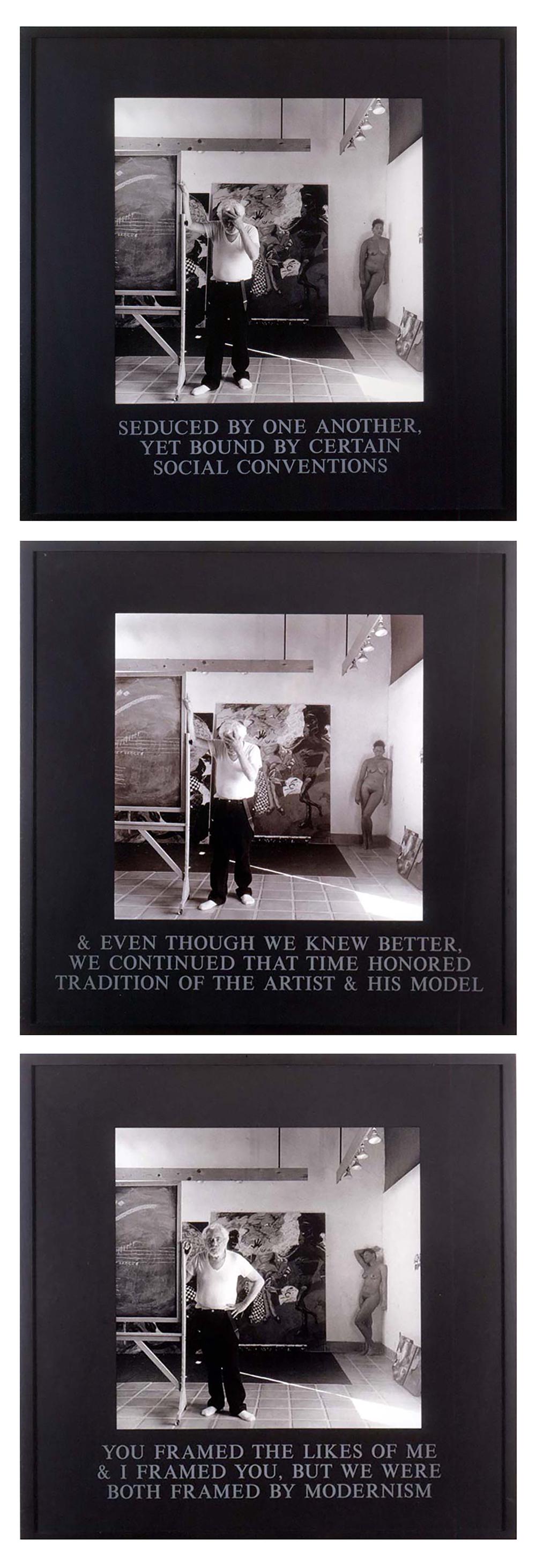Robert Colescott. The Male Gaze

Photographer and video artist Carrie Mae Weems (b. 1953) collaborated with Robert Colescott to produce a series of three photographs, in which a nude Weems poses next to a large painting in the back corner of Colescott’s studio. Though cast as the nude model—the object of the male gaze, ubiquitous in representations of women throughout history—Weems framed the images in her own words, literally inscribing herself—the photographer—into their encounter. Colescott appears vulnerable; his head in his hands, he’s half-dressed, with suspenders down and no shoes. Weems addresses him: “You framed the likes of me and I framed you,” she writes in the final image, “But we were both framed by modernism,” suggesting that as Black artists and individually as a Black woman and a Black man, both negotiated themselves within the perceptions of the viewer and the wider art world.1
Franklin Sirmans, “Carrie Mae Weems: A World of Her Own,” Studio Magazine, Winter/Spring 2014, 20. ↩︎